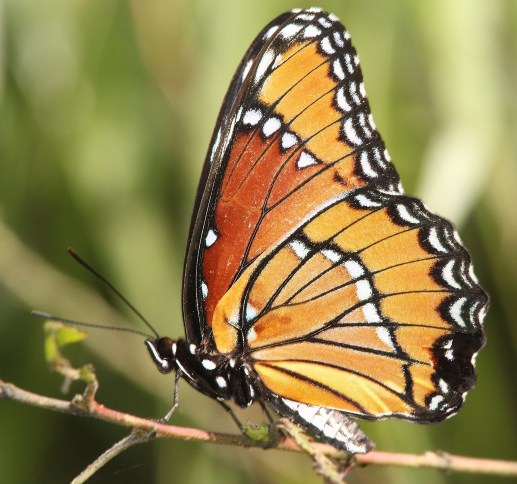By Jenn Appel and Elizabeth Mogg
Mimicry in animals is when one animal can make themselves to look or act like another animal in order to disguise themselves.

Some animals use mimicry to trick predators. The red milk snake, for example, looks very similar to the coral snake. Because the coral snake is venomous, predators may not take the risk of attacking the milk snake.
 Some animals use mimicry to sneak up on prey. The American zone-tailed hawk has a lot of similarities to vultures in design. The hawk will sometimes fly with a flock of vultures to allow it to sneak up on unsuspecting rodents.
Some animals use mimicry to sneak up on prey. The American zone-tailed hawk has a lot of similarities to vultures in design. The hawk will sometimes fly with a flock of vultures to allow it to sneak up on unsuspecting rodents.
Some other examples of mimicry in animals are the marine flatworms, glass lizards, robber flies, scarlet king snakes, and viceroy butterflies.
The marine flatworm can make itself look like a sea slug.
Sea slugs are left alone because aquatic animals know they emit a poisonous substance.


∅
A glass lizard, being legless, looks like a Florida king snake which makes other animals leave him alone.
Robber flies can copy the sound of bumblebees.
Non-venomous Scarlet king snakes can also make themselves resemble other snakes, such as the coral snake that is venomous.
The viceroy butterfly uses mimicry to look like a monarch butterfly which is poisonous to predators.
There are many other animals that use mimicry to keep themselves safe.
